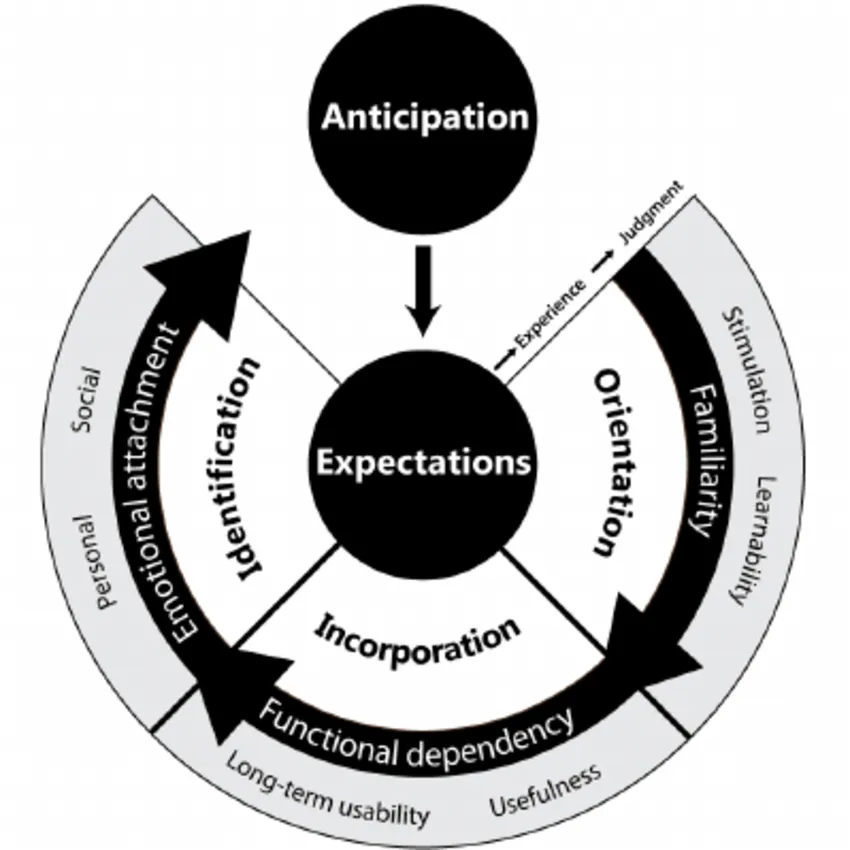Understanding the Temporality of User Experience for Sustained Design.
Understanding the dimension of time in the user experience
A constantly evolving experience
A user’s experience is far from static.
It continuously evolves, influenced by shifting needs, changing expectations, and the broader context of their environment. Designing with an understanding of this temporal evolution allows us to move beyond immediate usability concerns and toward long-term engagement and loyalty.
This perspective doesn’t just improve how users interact with a product — it builds enduring relationships between users and the systems they use.
The dynamic concept of User Temporality
User Temporality describes how people experience a digital product over time. It spans the entire journey — from first interaction to habitual use and, eventually, disengagement.
This notion encourages designers to think beyond static snapshots of behavior and instead design adaptive, responsive experiences that evolve with users’ changing needs and emotional states.
Karapanos’s temporal model of UX
Among the researchers who explored User Temporality, Evangelos Karapanos proposed a time-based model that examines how experience unfolds in three main phases, blending emotional response and usability considerations:
- Familiarity – the user learns how to use the product effectively.
- Functional Dependency – the product becomes embedded in daily routines.
- Emotional Attachment – the product is accepted and begins to contribute to the user’s identity and social interactions.

Karapanos’s model reveals how emotions and usability coexist and evolve across a product’s lifecycle. In the early stages, learnability challenges dominate; later, usability becomes central.
Once these functional barriers are overcome, an emotional bond often emerges — marking a turning point in the user–product relationship and paving the way for dependence and loyalty.
The iPhone as a temporal success story
Take the example of the iPhone.
Its lasting success is not merely the result of hype or marketing cycles — it stems from its ability to evolve with its users and integrate seamlessly into everyday life.
Consider how the introduction of the front-facing camera transformed the device’s role, turning it from a communication tool into a social enabler and identity artifact.
This illustrates how products can create lasting emotional connections by adapting to users’ evolving expectations and cultural contexts.
Commercial successes like the iPhone demonstrate that continuous user engagement is built over time through trust, delight, and emotional relevance — not just functional efficiency.
Beyond usability: the importance of hedonic quality
Focusing exclusively on usability isn’t enough.
Joy of use, emotional satisfaction, and aesthetic pleasure are universal factors that drive attachment — whether in entertainment platforms or professional software.
Designing with hedonic quality in mind offers a powerful lens to explore the temporality of UX.
It enriches the product lifecycle by incorporating the emotional transitions that users experience and acknowledges that users are dynamic, subjective beings, influenced by memories of past interactions and expectations of future ones.
Embracing long-term UX thinking
For UX researchers and designers, the key challenge is to integrate this long-term perspective into design and evaluation processes.
It requires stepping back from purely episodic studies and looking instead at how experiences evolve across time — from discovery to mastery, from function to emotion.
This shift may make evaluation more complex, but the rewards are worth it:
- deeper satisfaction,
- stronger loyalty,
- and more meaningful, enduring user relationships.
Conclusion
Understanding User Temporality isn’t just an academic exercise.
It’s a strategic mindset — one that helps us design sustainable, emotionally resonant experiences that grow with users rather than simply serve them in the moment.